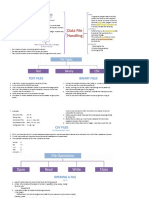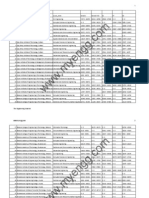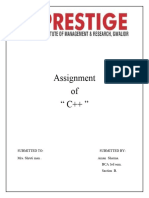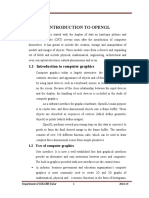0% found this document useful (0 votes)
7 views11 pagesCH - 5 File Handling
The document provides comprehensive notes on file handling in Python, detailing types of files such as text, binary, and CSV, along with their characteristics. It explains how to open, read, write, and close files using various methods and modes, including the use of the 'with' clause for automatic file management. Additionally, it covers the pickle module for serializing Python objects and the process of reading from and writing to CSV files.
Uploaded by
hrito763Copyright
© © All Rights Reserved
We take content rights seriously. If you suspect this is your content, claim it here.
Available Formats
Download as PDF, TXT or read online on Scribd
0% found this document useful (0 votes)
7 views11 pagesCH - 5 File Handling
The document provides comprehensive notes on file handling in Python, detailing types of files such as text, binary, and CSV, along with their characteristics. It explains how to open, read, write, and close files using various methods and modes, including the use of the 'with' clause for automatic file management. Additionally, it covers the pickle module for serializing Python objects and the process of reading from and writing to CSV files.
Uploaded by
hrito763Copyright
© © All Rights Reserved
We take content rights seriously. If you suspect this is your content, claim it here.
Available Formats
Download as PDF, TXT or read online on Scribd
/ 11























































































